The document provides definitions and examples of common engineering curves including cycloids, involutes, spirals, and helices. It begins with definitions of these terms: a cycloid is the locus of a point on a circle rolling along a straight path; an involute is the locus of the end of a string wound around a circular pole; a spiral is a curve generated by a point revolving around a fixed point while moving toward it; and a helix is a curve generated by a point moving around a cylinder or cone while advancing in the axial direction. The document then provides examples and step-by-step solutions for drawing these curves based on given parameters such as string length, circle diameters, and rates of rotation/translation
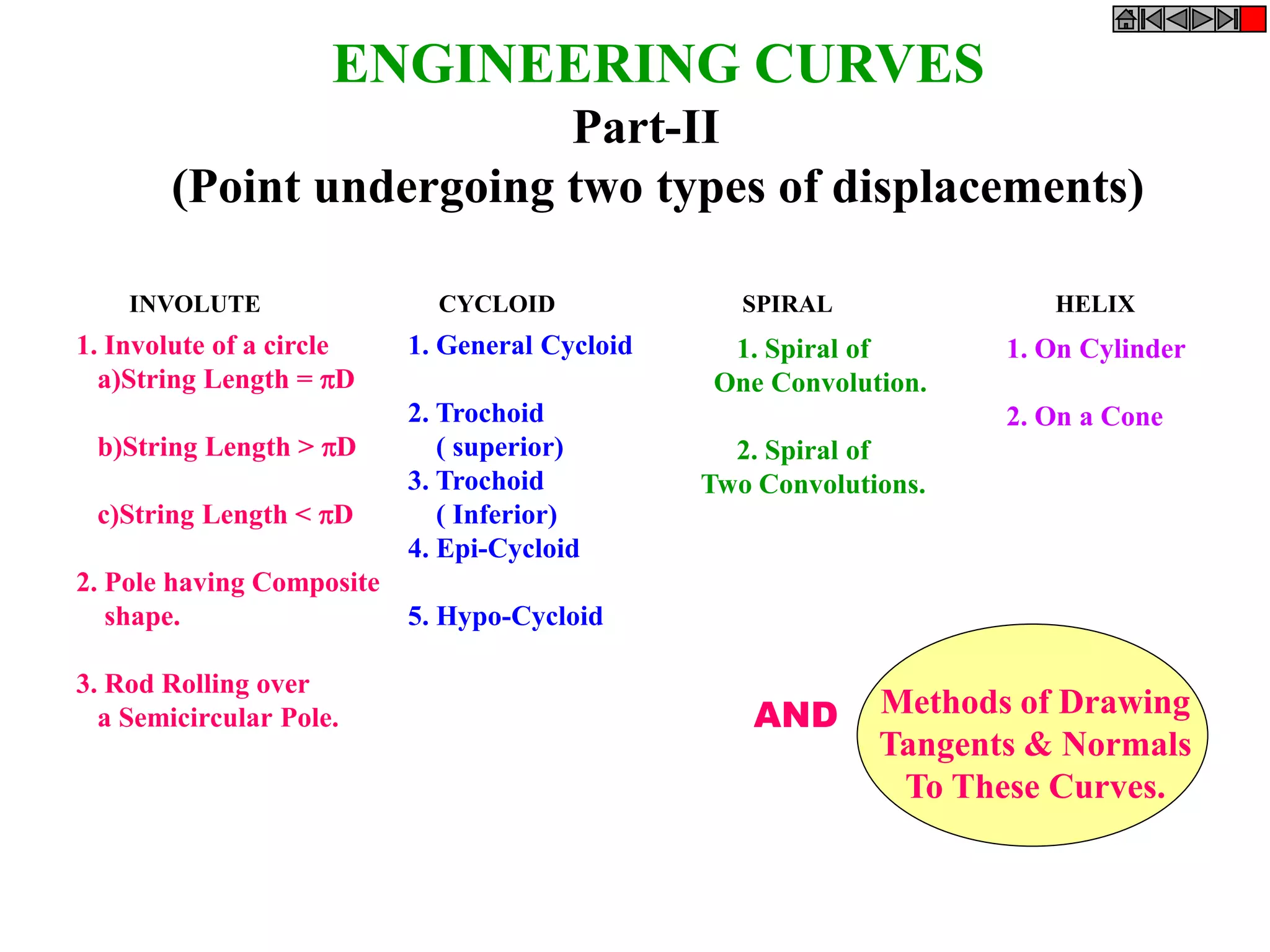





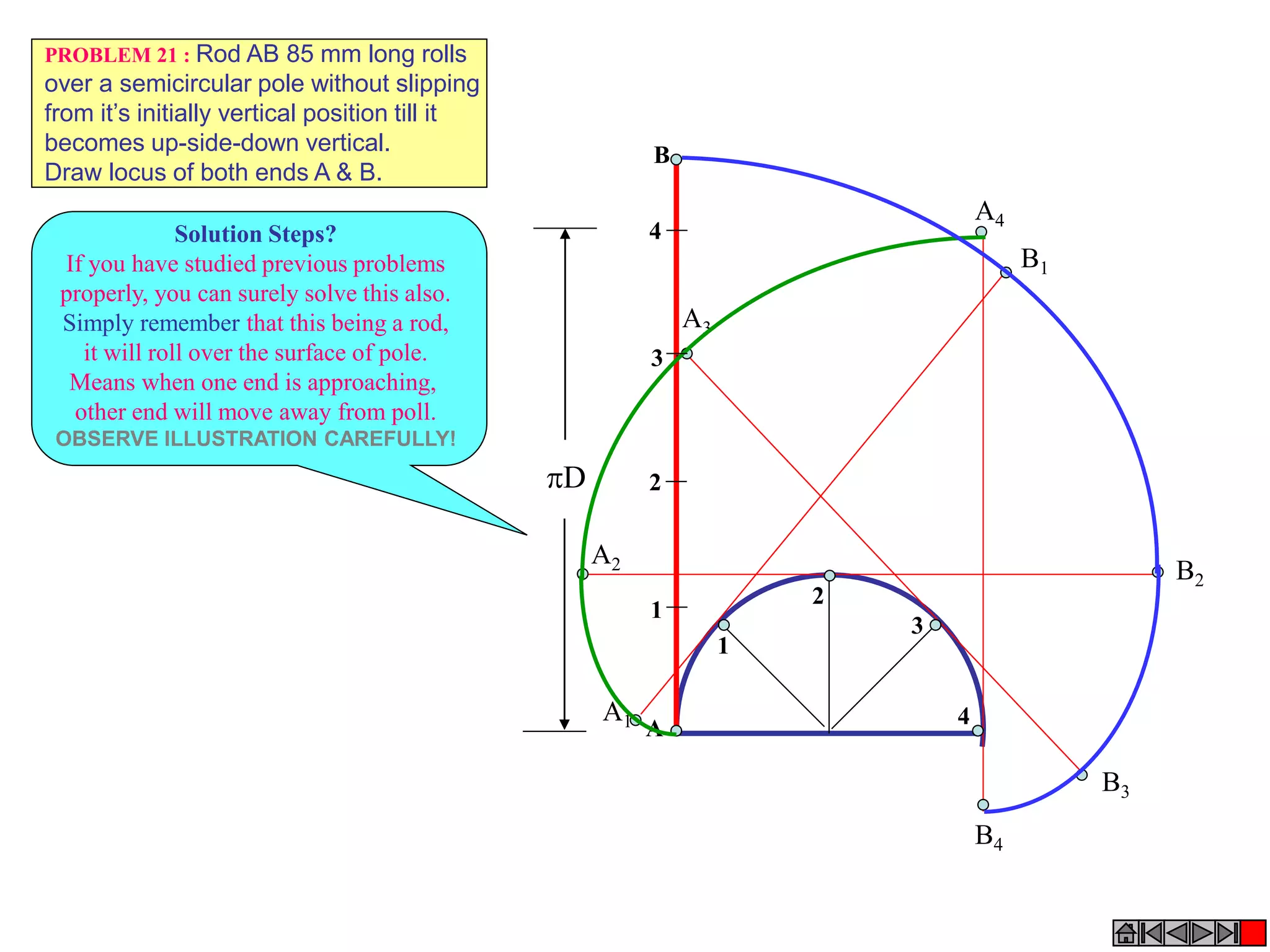

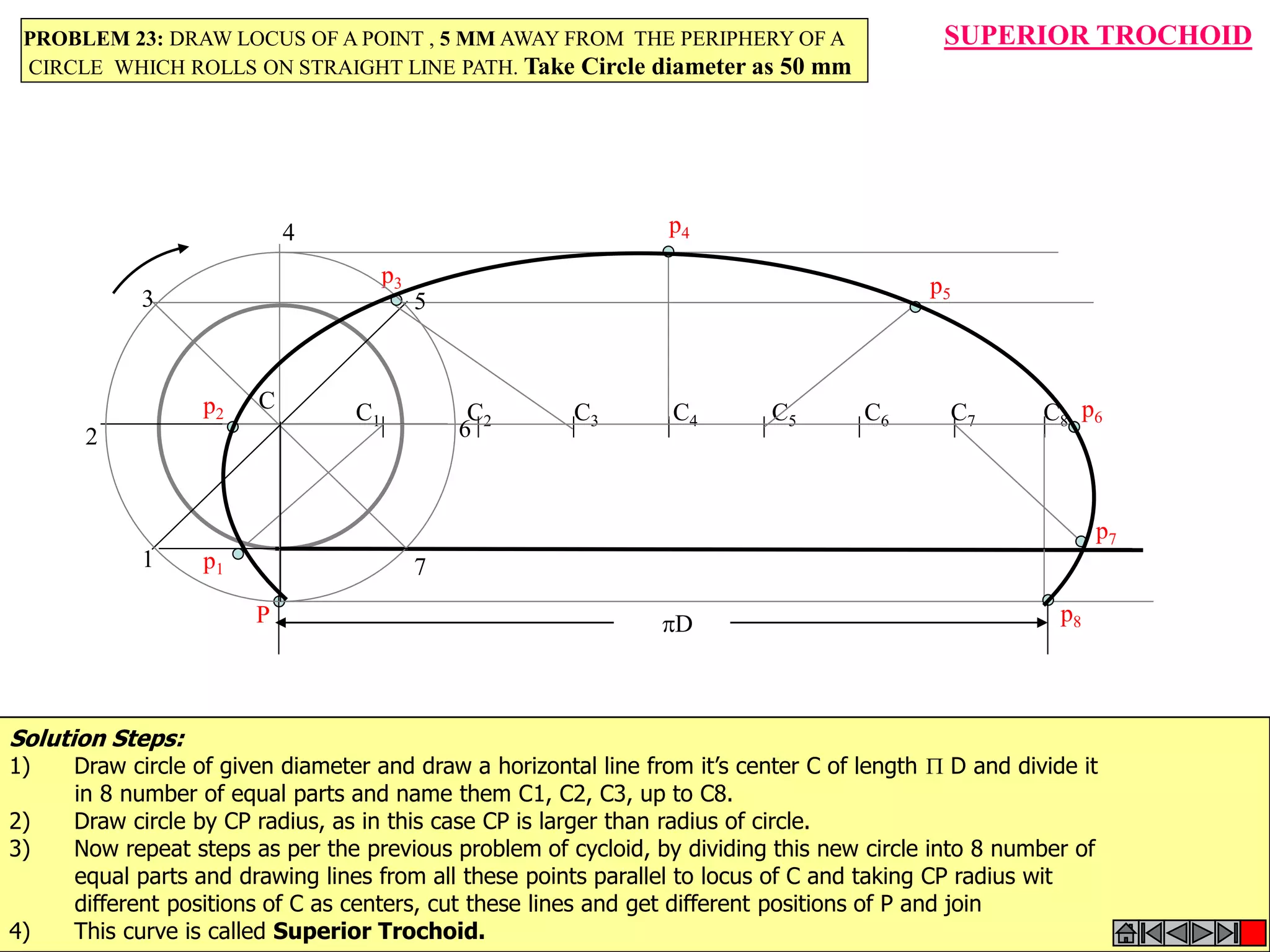

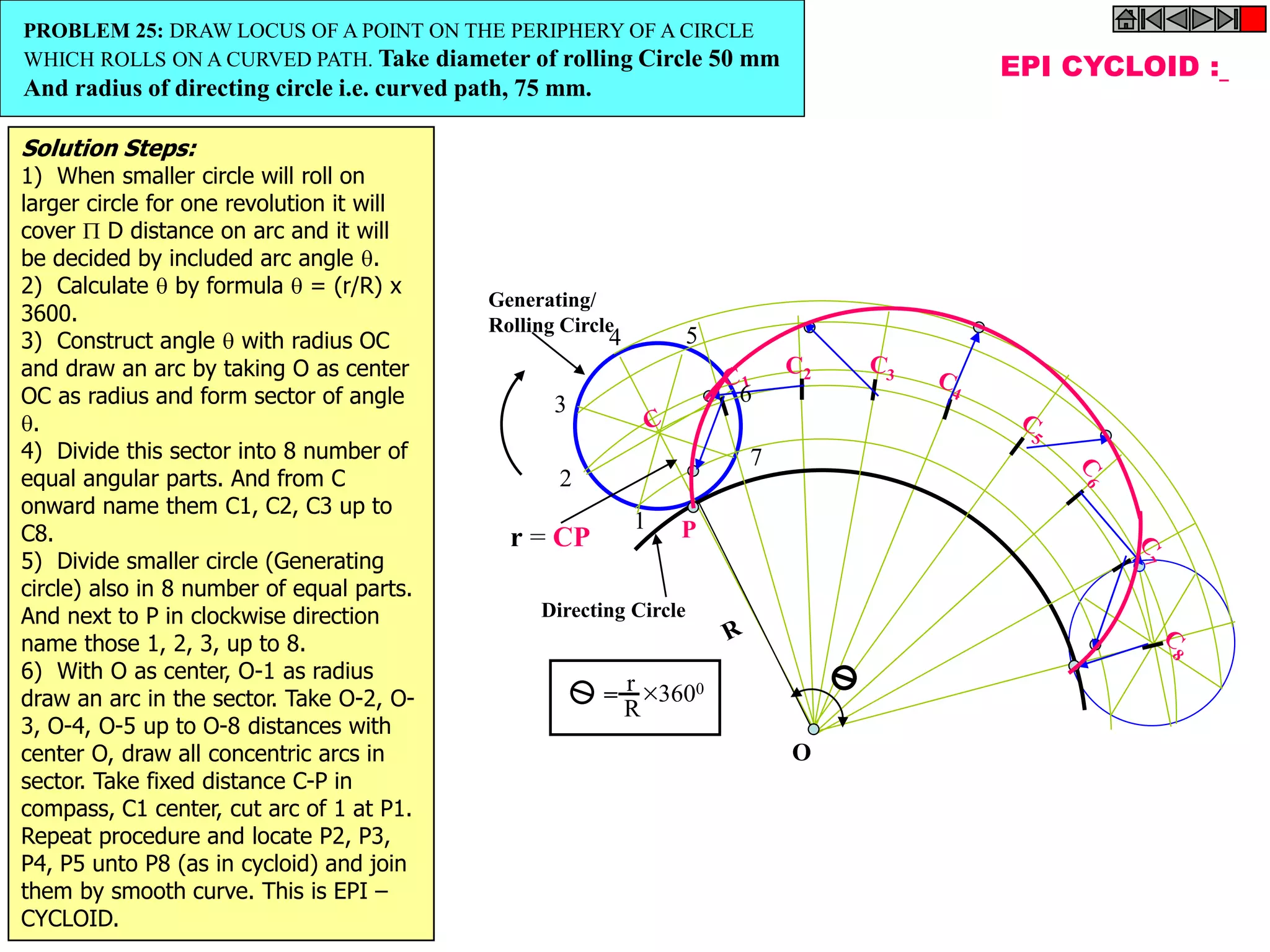


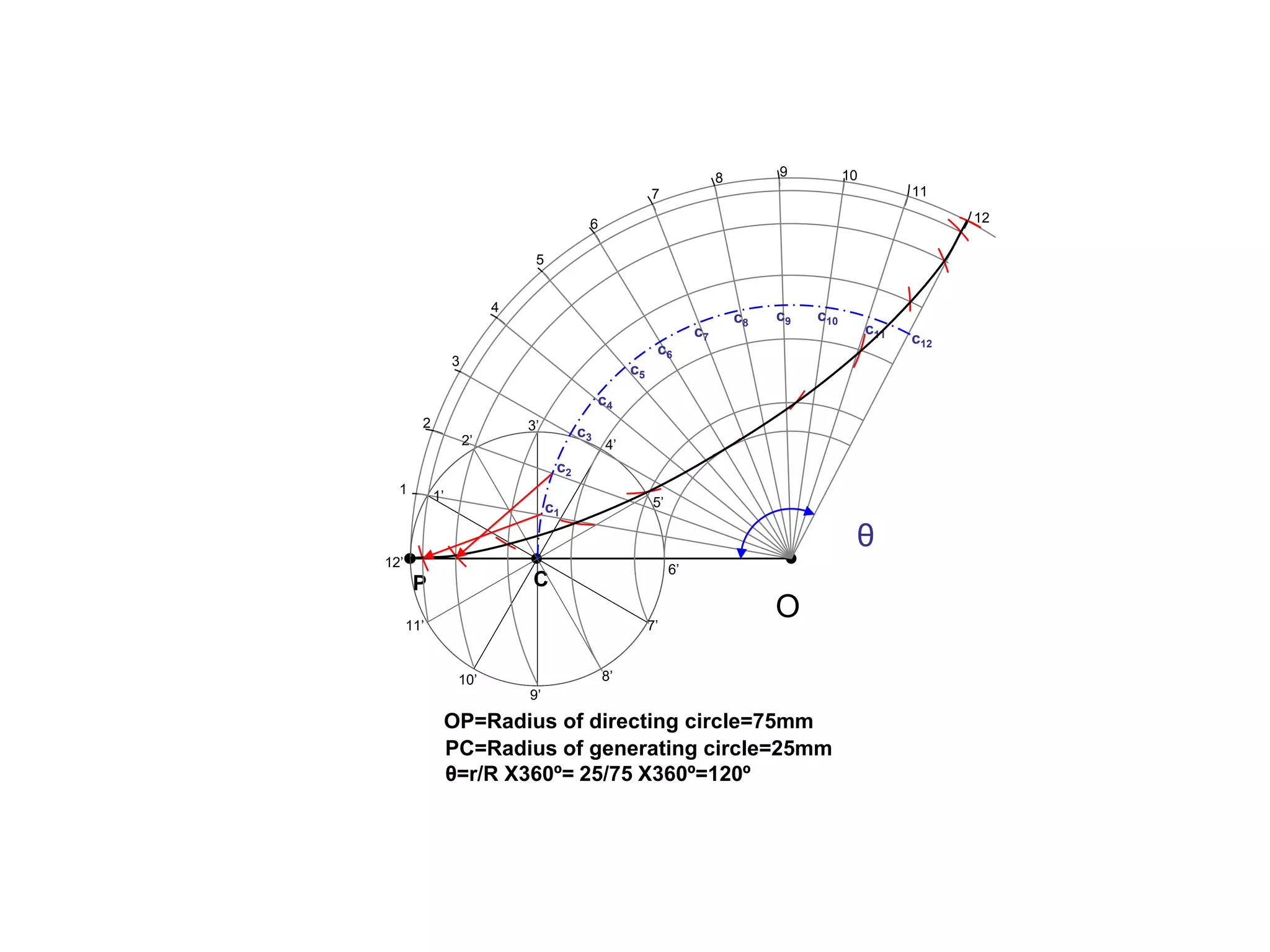
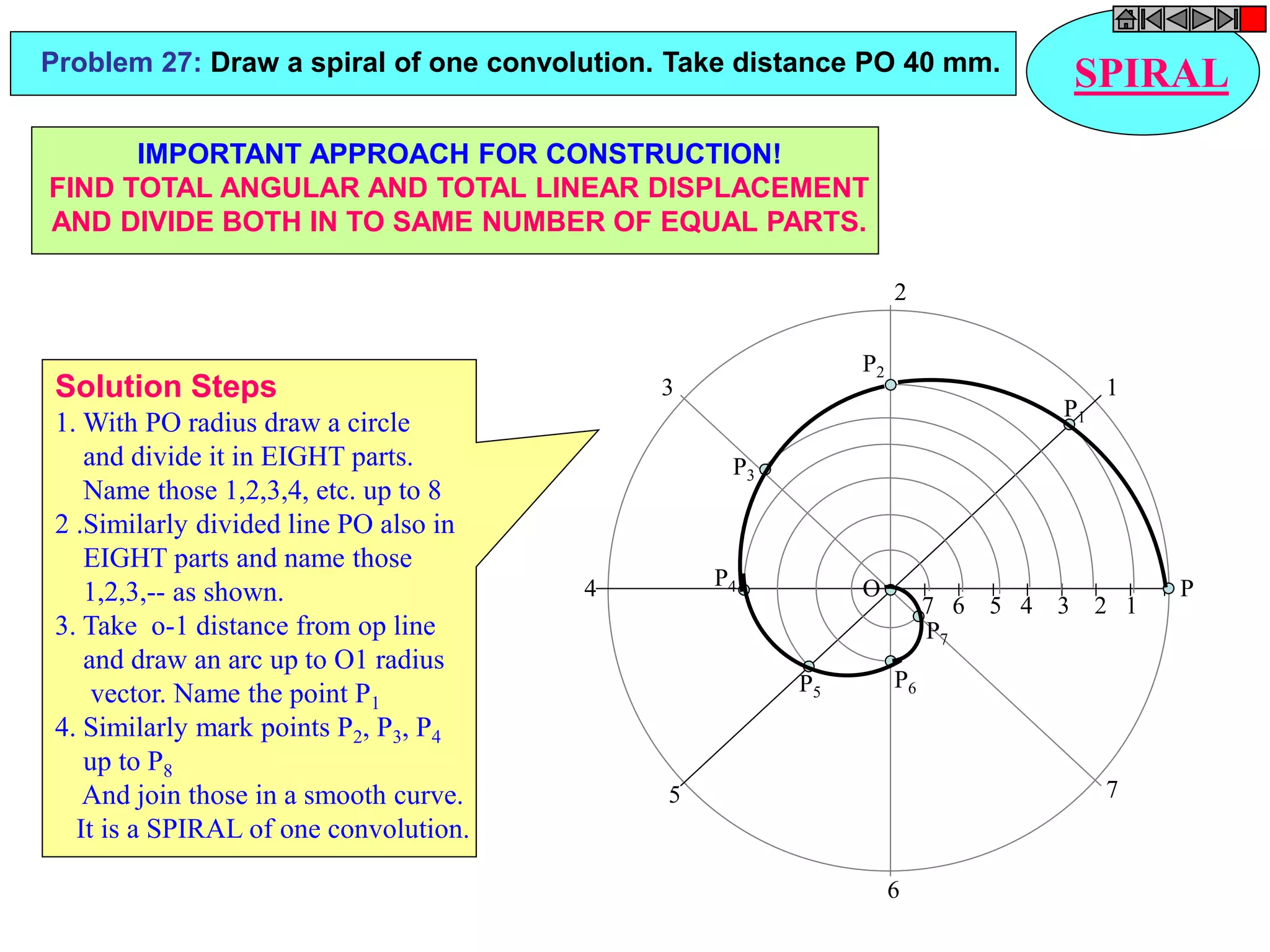




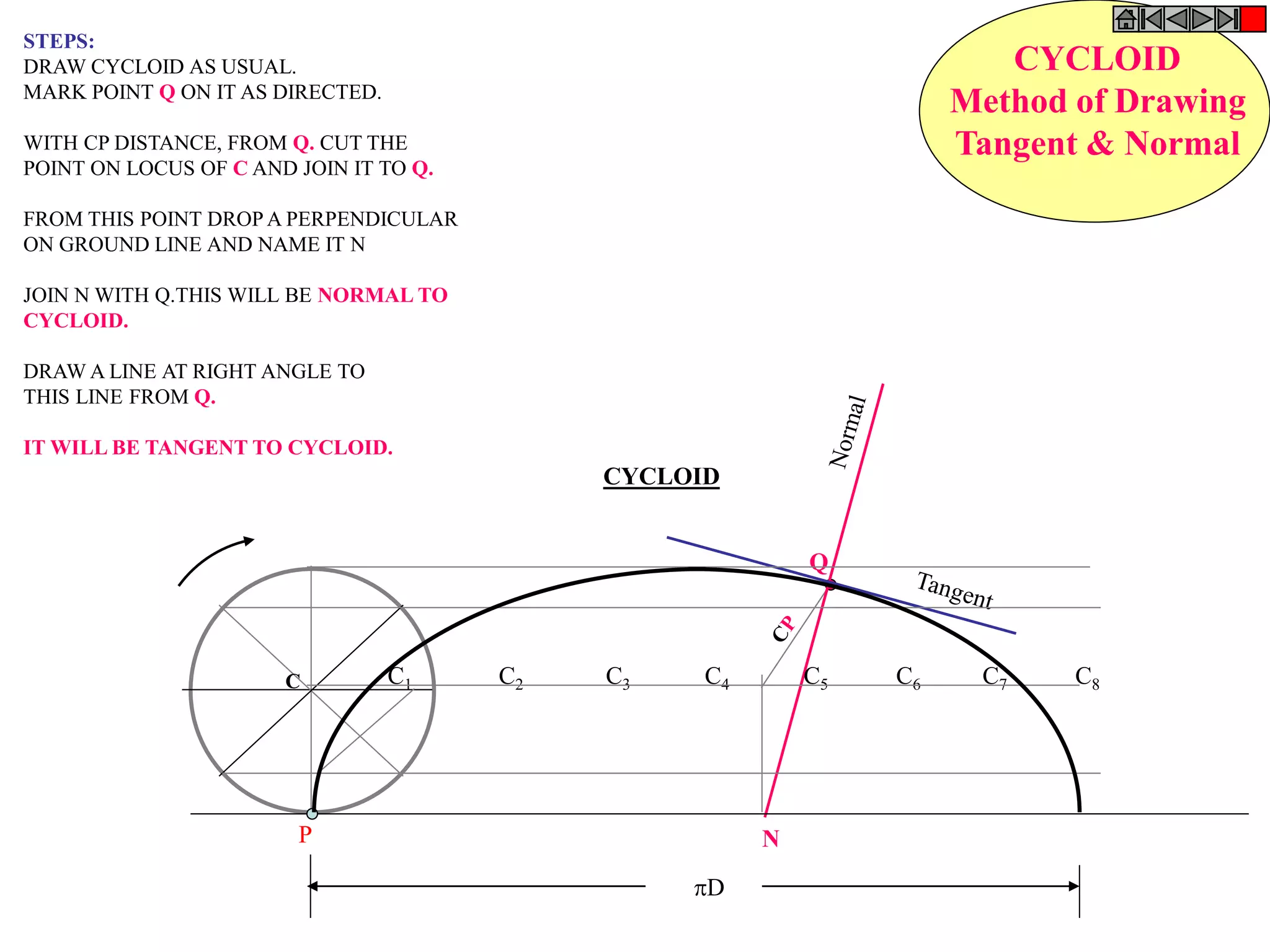

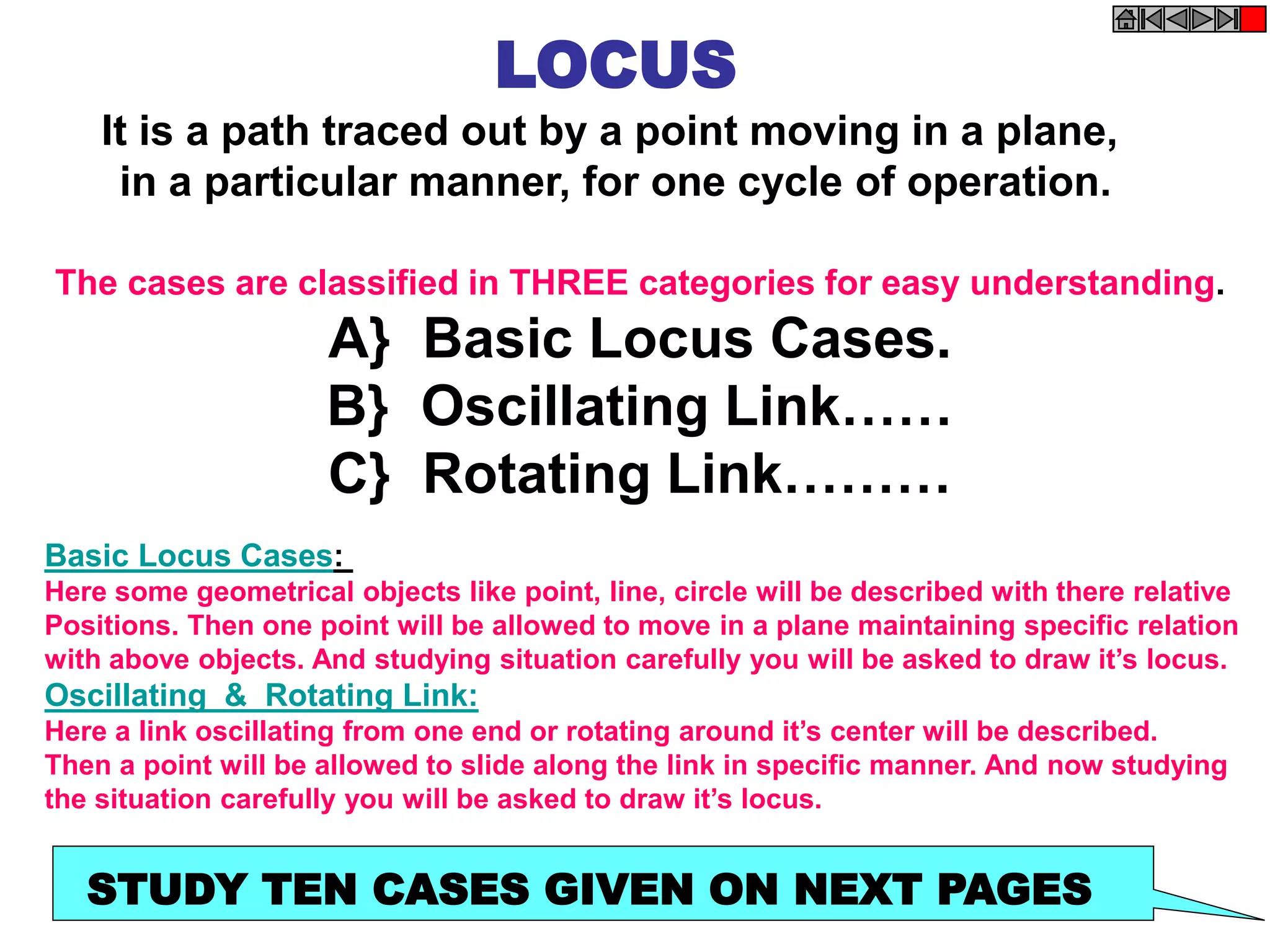
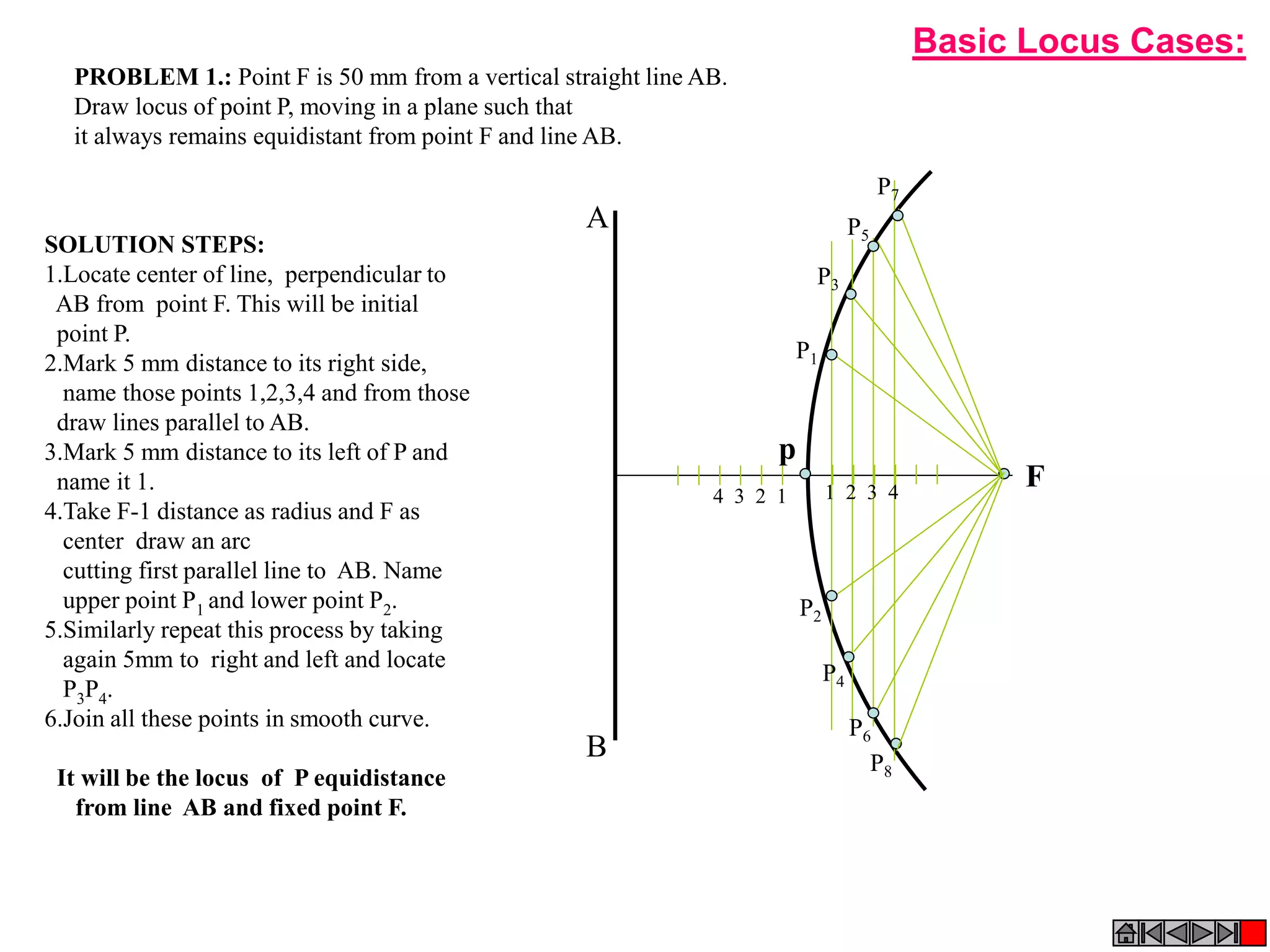







![A B
A1
A2
A4
A5
A3
A6
A7
P
p1 p2
p3
p4
p5
p6
p7
p8
1 2 3
4 5 6 7
Problem 9:
Rod AB, 100 mm long, revolves in clockwise direction for one revolution.
Meanwhile point P, initially on A starts moving towards B and reaches B.
Draw locus of point P.
ROTATING LINK
1) AB Rod revolves around
center O for one revolution and
point P slides along AB rod and
reaches end B in one
revolution.
2) Divide circle in 8 number of
equal parts and name in arrow
direction after A-A1, A2, A3, up
to A8.
3) Distance traveled by point P
is AB mm. Divide this also into 8
number of equal parts.
4) Initially P is on end A. When
A moves to A1, point P goes
one linear division (part) away
from A1. Mark it from A1 and
name the point P1.
5) When A moves to A2, P will
be two parts away from A2
(Name it P2 ). Mark it as above
from A2.
6) From A3 mark P3 three
parts away from P3.
7) Similarly locate P4, P5, P6,
P7 and P8 which will be eight
parts away from A8. [Means P
has reached B].
8) Join all P points by smooth
curve. It will be locus of P](https://image.slidesharecdn.com/curves2-221226112146-8bd24f69/75/CURVES2-ppt-31-2048.jpg)
![A B
A1
A2
A4
A5
A3
A6
A7
P
p1
p2
p3
p4
p5
p6
p7
p8
1 2 3 4
5
6
7
Problem 10 :
Rod AB, 100 mm long, revolves in clockwise direction for one revolution.
Meanwhile point P, initially on A starts moving towards B, reaches B
And returns to A in one revolution of rod.
Draw locus of point P.
Solution Steps
+ + + +
ROTATING LINK
1) AB Rod revolves around center O
for one revolution and point P slides
along rod AB reaches end B and
returns to A.
2) Divide circle in 8 number of equal
parts and name in arrow direction
after A-A1, A2, A3, up to A8.
3) Distance traveled by point P is AB
plus AB mm. Divide AB in 4 parts so
those will be 8 equal parts on return.
4) Initially P is on end A. When A
moves to A1, point P goes one
linear division (part) away from A1.
Mark it from A1 and name the point
P1.
5) When A moves to A2, P will be
two parts away from A2 (Name it P2
). Mark it as above from A2.
6) From A3 mark P3 three parts
away from P3.
7) Similarly locate P4, P5, P6, P7
and P8 which will be eight parts away
from A8. [Means P has reached B].
8) Join all P points by smooth curve.
It will be locus of P
The Locus will follow the loop
path two times in one revolution.](https://image.slidesharecdn.com/curves2-221226112146-8bd24f69/75/CURVES2-ppt-32-2048.jpg)